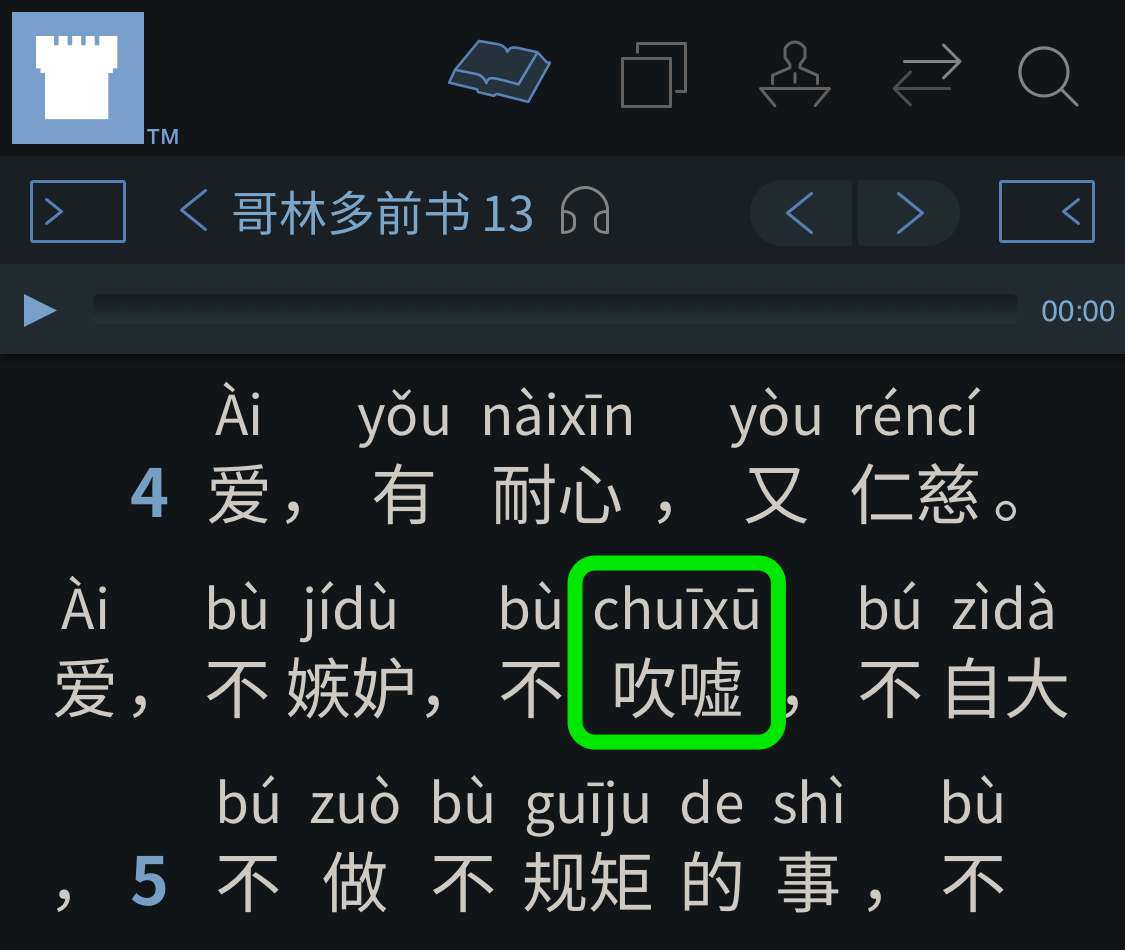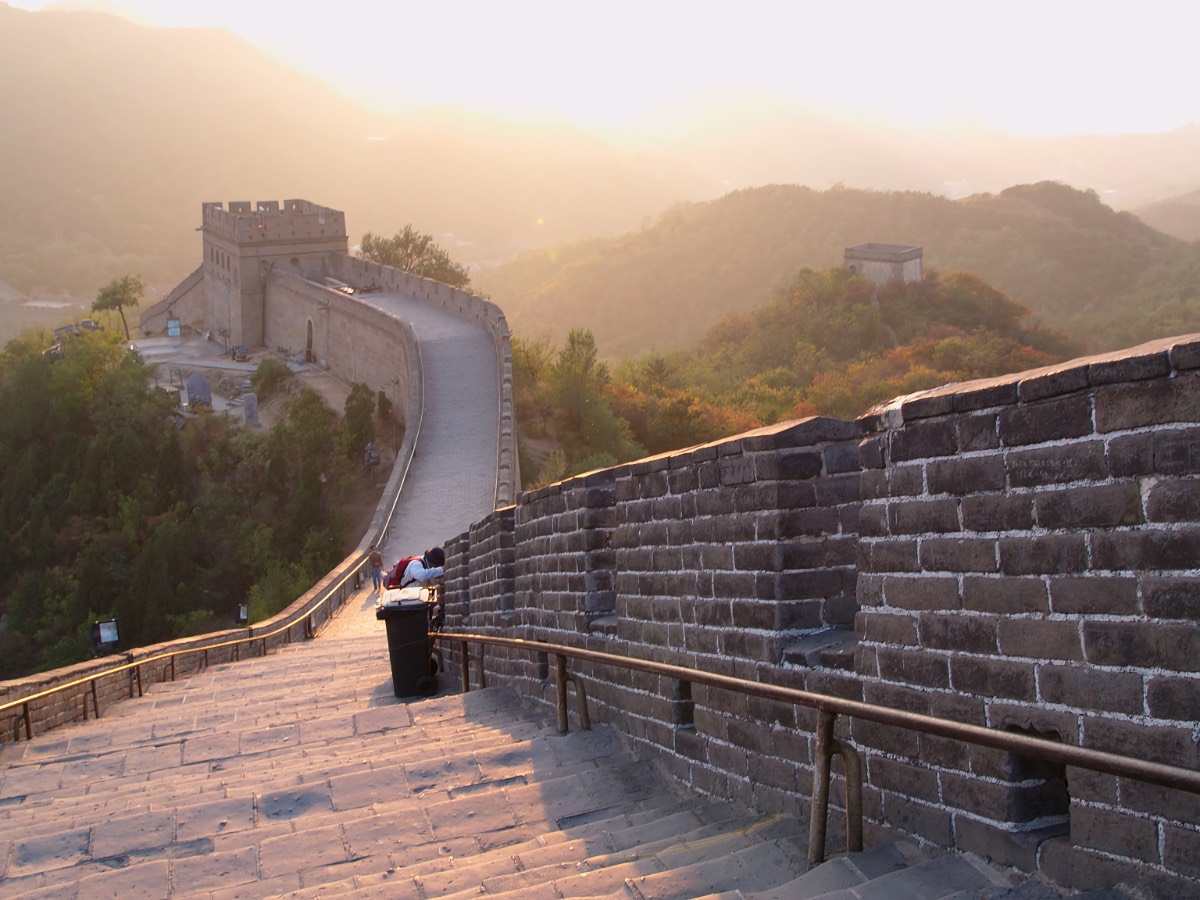chōngtū (chōng·tū {dashing → [clashing]} · {chimney → [dashing forward; charging]} → [conflicting; clashing] 冲突 衝突) ← Tap/click to show/hide the “flashcard”
[Notes: Tap/click on a Pīnyīn (Pīn·yīn {Piecing Together of} · Sounds → [Pinyin] 拼音) expression to reveal its “flashcard”; tap/click on a “flashcard” or its Pīnyīn (Pīn·yīn {Piecing Together of} · Sounds → [Pinyin] 拼音) expression to hide the “flashcard”. 📖 📄 📘 icons mean 📖 Reveal All, 📄 Reveal Advanced, and 📘 Reveal None re all the “flashcards” in the heading, paragraph, etc. that they are placed at the beginning of.]
War has certainly been a prominent subject in the news lately. Here are a couple of recent headlines I found with a quick web search:
Thinking the ‘unthinkable’: NATO wants Canada and allies to gear up for a conventional war
The looming shadow of a possible future war over Taiwan must also especially concern many people in the Mandarin field.
At the time of this writing, jw.org was featuring the article “When Will the Fighting Stop?—What Does the Bible Say?”. Where the English version of this article uses the expressions “fighting” or “conflicts”, the Mandarin version uses this week’s MEotW, “chōngtū (chōng·tū {dashing → [clashing]} · {chimney → [dashing forward; charging]} → [conflicting; clashing] 冲突 衝突)”. For example, here are the English and Mandarin titles of the article:
English:
When Will the Fighting Stop?—What Does the Bible Say?
Mandarin:
📖 📄 📘 Shìshang (Shì·shang {Generation → [World]} · Upon 世上) de (’s 的) Wǔzhuāng (Wǔ·zhuāng Militarily · {Dressed Up} → [Armed] 武装 武裝) Chōngtū (Chōng·tū {Dashings → [Clashings]} · {Chimneys → [Chargings]} → [Conflicts] 冲突 衝突) Huì (Will 会 會) Yǒu (Have 有) Píngxī (Píng·xī {Being Made to Be Flat, Level, Even → [Being Made to Be Peaceful]} · Ceasing → [Subsiding] 平息) de (’s 的) Yì (One 一) Tiān (Sky → [Day] 天) Ma ([? ptcl for “yes/no” questions] 吗 嗎)?
In addition to being used to refer to armed conflicts, “chōngtū (chōng·tū {dashing → [clashing]} · {chimney → [dashing forward; charging]} → [conflicting; clashing] 冲突 衝突)” can also be used to refer to other kinds of conflicts. For example, the section of the Was Life Created? brochure entitled “Science and the Genesis Account” in English and “Kēxué (Kē·xué {Branches of Study} · Learning → [Science] 科学 科學) yǔ (and 与 與/与) Chuàngshìjì (Chuàng·shì·jì {Initiating, Creating of} · {Generation → [World]} · Record → [Genesis] 创世记 創世記)” in Mandarin contains this statement:
However, the real contradiction is, not between science and the Bible, but between science and the opinions of Christian Fundamentalists.
Mandarin (WOL, Pīnyīn (Pīn·yīn {Piecing Together of} · Sounds → [Pinyin] 拼音) Plus)
📖 📄 📘 Qíshí (Qí·shí its · {being solid → [actuality]} → [actually] 其实 其實), gēn (with 跟) kēxué (kē·xué {branches of study} · learning → [science] 科学 科學) yǒu (having 有) chōngtū (chōng·tū {dashing → [clashing]} · {chimney → [charging]} → [conflict] 冲突 衝突) de (’s 的) bú (not 不) shì (is 是) Shèngjīng (Shèng·jīng (the) Holy · Scriptures → [the Bible] 圣经 聖經) de (’s 的) jìzǎi (jì·zǎi recorded · writing → [account] 记载 記載), ér ({but (rather)} 而) shì (are 是) mǒuxiē (mǒu·xiē certain · {indefinite number of} → [certain] 某些) rén (people 人) de (’s 的) guāndiǎn (guān·diǎn view·points 观点 觀點).
Morphemes and Related Expressions
The “chōng (charge; rush; dash [→ [clash; collide]] | {pour boiling water on} | rinse; flush [→ [develop (film)]] 冲 沖/衝)” in “chōngtū (chōng·tū {dashing → [clashing]} · {chimney → [dashing forward; charging]} → [conflicting; clashing] 冲突 衝突)” can mean “charge; rush; dash”, leading to an effective meaning of “clash”, which is what it means in “chōngtū (chōng·tū {dashing → [clashing]} · {chimney → [dashing forward; charging]} → [conflicting; clashing] 冲突 衝突)”. Other expressions that use this morpheme include “chōngjìn (chōng·jìn charge; rush; dash · {to advance; enter [into; in]} 冲进 沖/衝進)”, “chōngpò (chōng·pò charge; rush; dash · {to break (through)} 冲破 沖/衝破)”, and “chōngzǒu (chōng·zǒu rinse; flush · {to walk → [to go away]} 冲走 沖走)”.
Oddly, the “tū (chimney [→ [sticking out | dashing forward; charging [→ [sudden[ly]; unexpected[ly]]]]] 突)” in “chōngtū (chōng·tū {dashing → [clashing]} · {chimney → [dashing forward; charging]} → [conflicting; clashing] 冲突 衝突)” has a traditional literal meaning of “chimney”, which can lead to an effective meaning of “dashing forward” or “charging”, presumably reflecting how a chimney suddenly juts out of the roof of a house. This is what it means in “chōngtū (chōng·tū {dashing → [clashing]} · {chimney → [dashing forward; charging]} → [conflicting; clashing] 冲突 衝突)”. Other expressions that use this “tū (chimney [→ [sticking out | dashing forward; charging [→ [sudden[ly]; unexpected[ly]]]]] 突)” include “tūchù (tū·chù {chimney → [projecting]} · contacting (thing) → [synapse] 突触 突觸)”, “tūpò (tū·pò {chimney → [sticking out | dashing forward]} · {breaking → [through]} → [breaking through | breakthrough | surmounting; exceeding; overcoming] 突破)”, “tūrán (tū·rán {chimney → [dashing forward] → [sudden[ly]; abrupt[ly]]} · {-ly | like that} 突然)”, and past MEotW “tūbiàn (tū·biàn {chimney → [dashing forward] → [sudden[ly]; unexpected[ly]]} · changing [→ [mutation]] 突变 突變)”.
To Talk About a War to End All Wars
The above-mentioned jw.org article uses “chōngtū (chōng·tū {dashing → [clashing]} · {chimney → [dashing forward; charging]} → [conflicting; clashing] 冲突 衝突)” when it discusses how today’s wars show that the end of all war is near. Here are a couple of examples:
English:
Global conflicts today indicate that an end to all war is soon to come. These wars fulfill Bible prophecy about the time period in which we live. The Bible calls it “the conclusion of the system of things.”
Mandarin:
📖 📄 📘 Shìshang (Shì·shang {generation → [world]} · upon 世上) de (’s 的) zhànzhēng (zhàn·zhēng wars · contendings → [wars] 战争 戰爭) biǎomíng (biǎo·míng indicate · {to be clear} 表明) wǒmen (wǒ·men we · [pl] 我们 我們) zhèng ({just now} 正) shēnghuó ({are living} 生活) zài (in 在) Shèngjīng (Shèng·jīng (the) Holy · Scriptures → [the Bible] 圣经 聖經) yùgào (yù·gào fore·told 预/豫告 預/豫告) de (’s 的) “mòqī (mò·qī end · period 末期)”, zhè (this 这 這) biǎoshì (biǎo·shì indicates · shows 表示) wǔzhuāng (wǔ·zhuāng militarily · {dressed up} → [armed] 武装 武裝) chōngtū (chōng·tū {dashings → [clashings]} · {chimneys → [chargings]} → [conflicts] 冲突 衝突) búduàn (bú·duàn not · {breaking off} → [being constant] 不断 不斷) de (’s 的) xiànxiàng (xiàn·xiàng appearing · appearance → [phenomenon] 现象 現象) jíjiāng (jí·jiāng {is near/close to being} · {will soon be} 即将 即將) zhōngzhǐ (zhōng·zhǐ ended · stopped 终止 終止).
English:
The Bible foretells the end of human conflicts. …by means of Armageddon, “the war of the great day of God the Almighty.”
Mandarin:
📖 📄 📘 Shèngjīng (Shèng·jīng (the) Holy · Scriptures → [the Bible] 圣经 聖經) yùgào (yù·gào fore·tells 预/豫告 預/豫告), Shàngdì (Shàng·dì Above’s · {Emperor → [God]} → [God] 上帝) huì (will 会 會) tōngguò (tōng·guò through · passing → [passing through] → [through] 通过 通過) “Quánnéng (Quán·néng All · Able → [Almighty] 全能) Shàngdì (Shàng·dì Above’s · {Emperor → [God]} → [God] 上帝) de (’s 的) dà (big → [great] 大) rìzi (rì·zi {sun → [day]} · [suf for nouns] 日子)” de (’s 的) zhànzhēng (zhàn·zhēng war · contending → [war] 战争 戰爭), yě (also 也) jiùshì (jiù·shì exactly · is 就是) “Hāmǐjíduōdùn (Armageddon 哈米吉多顿 哈米吉多頓)”, lái (come 来 來) zhōngzhǐ (zhōng·zhǐ {to end} · {to stop} 终止 終止) yíqiè (yí·qiè {one (whole)} · {corresponding (set of)} → [all] 一切) wǔzhuāng (wǔ·zhuāng militarily · {dressed up} → [armed] 武装 武裝) chōngtū (chōng·tū {dashings → [clashings]} · {chimneys → [chargings]} → [conflicts] 冲突 衝突).

